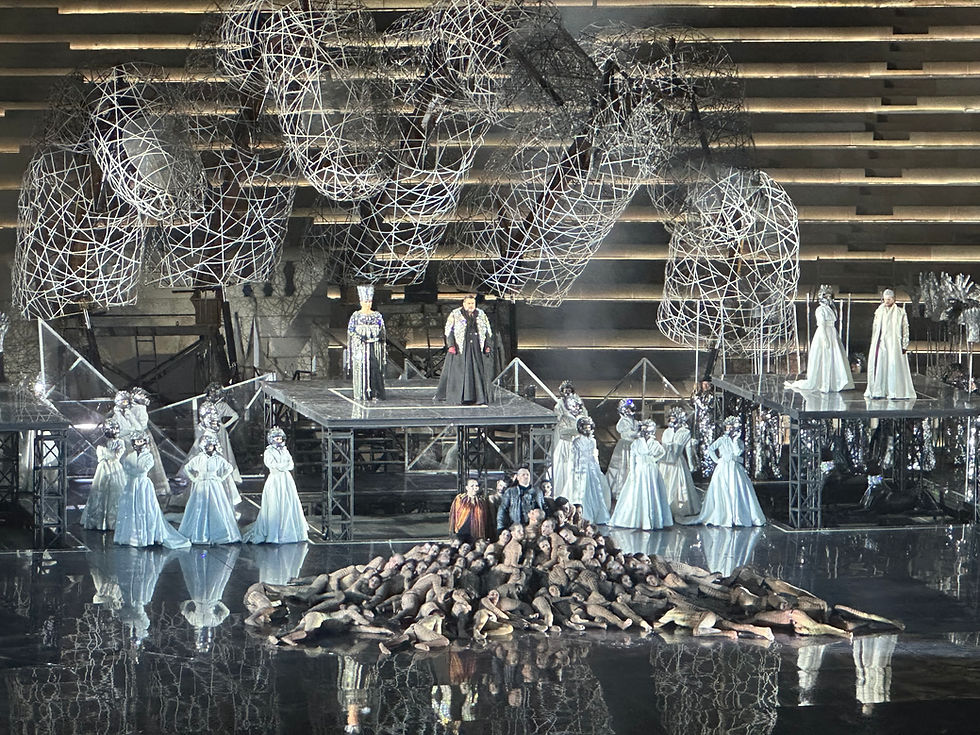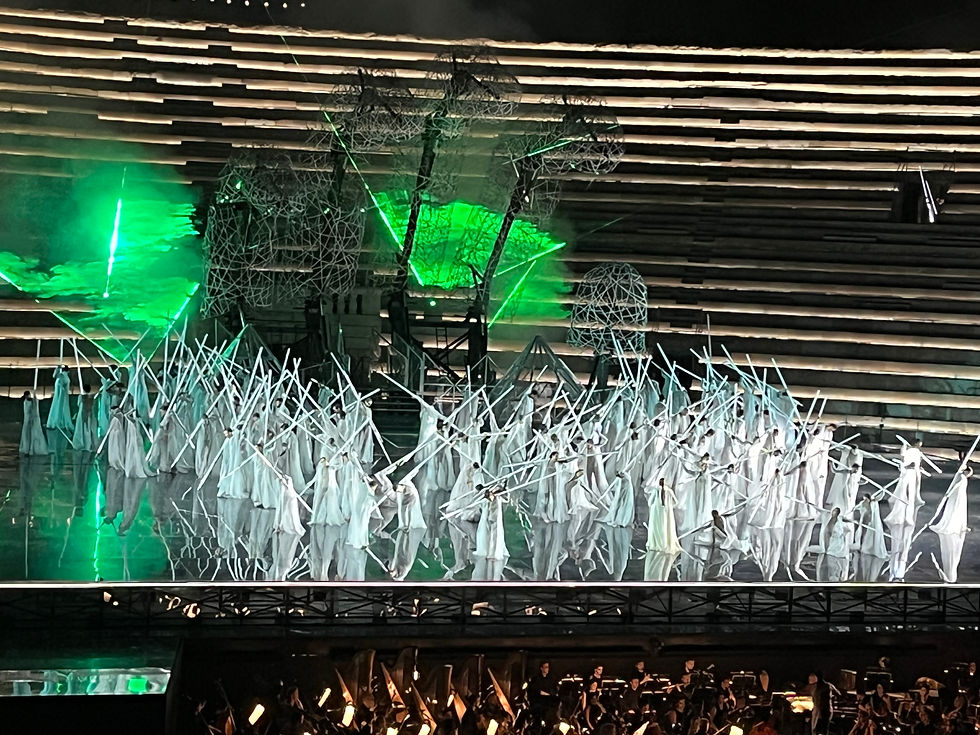A Night Under the Stars: Aida in the Ancient Arena di Verona
- Sara Beth Warnken
- Oct 17, 2024
- 4 min read

I experienced my first opera last Thursday at Arena di Verona in Verona, Italy, seeing Aida by Giuseppe Verdi. Many know Verona for two sites: the setting of the play of Romeo and Juliet and its Roman amphitheater, Verona di Arena, built in 30 AD almost 2000 years ago. Arena di Verona is the largest open-air opera theatre in the world, older than the Colosseum in Rome and the third largest amphitheater in Italy. The excitement of seeing a world-famous opera in a Roman amphitheater is quite difficult to put into words, but here is my attempt.
Prior to the show, it is common for some to dress up in their best attire for the opera. Although there is no strict dress code, most attendees wore dressy casual clothing, such as long skirts and sun dresses for women and polos for men. However, note that thong sandals, shorts and tank tops/vests are not permitted for men, according to the Arena di Verona FAQ page. My friend and I decided to wear long skirts, short heels and casual tops to see Aida.

Upon approaching the arena, the sheer scale of the amphitheater itself on the outside was quite shocking and impressive. Essentially anywhere in Piazza Brà across from the arena is a perfect spot to snap some photos and selfies in front of the amphitheater. Outside the arena, snacks, beverages, souvenirs, handheld fans and seat cushions were available for purchase; however, it was not permissible to bring outside food or drinks into the venue.
My friend and I arrived at the venue around 8:30, about 45 minutes before the show started, and we did not have to wait in long queues, having purchased our tickets ahead of time. Our timing in arrival was the perfect amount of time to sit and enjoy the views of the arena, while getting a bit of people-watching in before the show. Inside the arena, there were seat cushions, handheld fans, posters, program books and small souvenirs, such as magnets available for purchase. We bought seat cushions inside the arena for five euros, and I highly recommend doing so because the seats were quite uncomfortable for a three-hour long show, even with cushions. The seats are metal and relatively close together to others.

Seats were available on the ground floor in front of the stage, or up in the arena in the middle or top sections, ranging from about 32 to 200 euros in price. However, anywhere in the arena can promise a wonderful view of the show and the amphitheater itself, so there is no need to stress about purchasing expensive seats for a better view. I noticed an older crowd, with majority middle-aged and elder folks attending the opera. We visited the arena on a very humid and hot night in Verona and felt we wouldn’t have made it through the night without our handheld fans purchased outside the venue. We watched as about ten people passed out and fainted throughout the night, so it was important we hydrated with waters purchased inside the venue and fans to keep us cool throughout the show.

Aida itself was a fantastic show, with hundreds of singers, actors, actresses, dancers and a full orchestra pulling their talent together to make for an experience that left me in awe. In particular, the opera singers’ voices managed to travel through the amphitheater effortlessly. Each character sang with a full chest, great volume, passion, enthusiasm and a generous force. The opera was performed in Italian, but Italian and English subtitles were projected onto screens on the left and right sides of the amphitheater, making it easier to follow the storyline. I read a summarized version and English translation of the opera prior to arriving, which I highly recommend for anyone planning to see an opera of which they don’t already know the story. I believe the opera would be difficult to follow having not read at least some context prior to seeing the show.

The story of Aida involves a love triangle between Egypt’s primary military commander, Radamès, the princess of Egypt, Amneris and Aida, an Ethiopian slave taken into custody by Egyptian forces. Aida brings much emotion, suspense, drama and surprises to the crowd that repeatedly astonished me. On top of the extraordinary vocals from the opera’s main characters, the costumes for all participating actors on stage were spectacular, with intricate details, materials, patterns and Egyptian symbols. Another aspect I enjoyed were the incredible props throughout the show, such as a big moving hand in back of the stage, stick-like objects that glowed up as light sabers and an interesting triangular geometric structure. This 3D triangle represented a sociogram structure of relations between the characters to illuminate the opera’s love triangle.
Above all, my favorite parts of the show were the magnificent costumes, electric orchestra, the interesting structures and props and the sheer talent of the singers’ voices throughout the night. The only aspects I would change are the level of comfort of the seats, which were honestly very uncomfortable. The length of the opera was also long at three hours and felt drawn out at times, but that is to be expected when seeing an opera. My best advice for anyone looking to attend an opera at Arena di Verona are to come hydrated and after a nice meal, arrive around an hour early and to be sure to buy a seat cushion and handheld fan.

Yorumlar